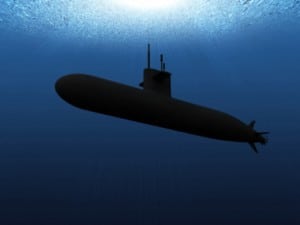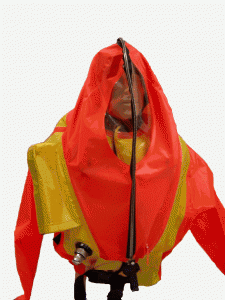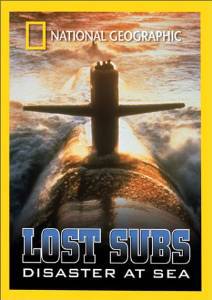
When you think of submarines, you might think of sub sandwiches, or start singing “…We all live in a yellow submarine, yellow submarine, yellow submarine….”1
But, as we recognize April 11th as National Submarine Day, it is good to remember that living on a US Naval Submarine is a hazardous place to be. On April 11, 1900 the first commissioned submarine, the USS Holland, was acquired by the United States Navy. The Holland was not the first Navy sub, however. That honor goes to the Alligator which was the first submarine ordered and built by the Navy, although it was never commissioned.
In 1863, the Alligator was being towed by the Sumpter, with the plan for the two ships to join the Union attack on Charleston, South Carolina. They were caught in a Nor’easter and the captain of the Sumpter made the decision to cut the ties to the Alligator. The submarine was lost in the “Graveyard of the Atlantic” and was forgotten for nearly 140 years. 2
No lives were lost when the Alligator sank, but there have been many submarine disasters since then. As submarines become larger and more sophisticated, more and more crew are needed, and the loss of life becomes more dramatic.

“Potent, lethal, secret. The ultimate war machine. Nothing else on earth is so densely packed with men and firepower. Submarines truly fought the Cold War. Yet for all their might they are no match for the power of the sea. The submariner’s deadliest enemy is not the other side, it is the ocean itself.” 3
The Civil War submarine HL Hunley was the first submarine to sink a ship in combat. It is known as the “murdering ship,” not because of the lives she took, but because her own crew died when she sank. So many lives were lost that World War I submarines became known as the “coffin service.“ 3
There are many causes of submarine disasters and loss of life, including water rushing in through cracks in the submarine’s hull, torpedoes exploding, valves not sealing, electrical problems, and a loss of power. The intense pressure of the deep seas can crush a submarine, causing a “humane,” instantaneous death. Most of the submarine deaths are much less humane and include suffocation and drowning. After nuclear powered subs were introduced, radiation poisoning also became a threat. 3
Safety was a concern about submarines from the very beginning. The earliest patents were often for safety equipment on submarines. In 1907 a patent was granted for “Means of Escape from Sunken Submarines.”4 But ways to more reliably rescue crews from downed subs weren’t developed until 1927 when the “Momsen Lung” was developed. The Momsen Lung recycled exhaled air and was hung around the sailors’ neck. It provided oxygen for the ascent and allowed the submariner to slowly rise to the surface, thus avoiding the bends.5

In 1962, the U.S. Navy introduced the Steinke Hood, an inflatable life jacket with a hood that trapped a bubble of breathing air and completely enclosed the submariner’s head. The Steinke Hood was standard equipment on all Navy submarines throughout the Cold War. The Navy then began replacing the Steinke Hood with the Submarine Escape Immersion Equipment (SEIE). This was a combination whole-body suit and one-man life raft. It provided protection against hypothermia in the freezing water – which is something that neither the Momsen Lung nor Steinke Hood was equipped to do. 6
Currently the Navy is working not only to improve survival rates on submarines but also means of escape and rescue. One improvement are the Deep Submergence Rescue Vehicles (DSRV) which are capable of rescues down to 2000 feet. Another one of the future rescue systems will include the ability to transfer personnel under pressure. This would allow crew members to be rescued at deep depths under immense pressure and then be transferred to a decompression chamber. 7

For more information on this fascinating subject, check out the resources listed below, and the others we have here in the library.

REFERENCES:
- George Martin, Paul McCartney, John Lennon, George Harrison. Copyright: Sony/ATV Tunes LLC, Sony/ATV Music Publishing (UK) Limited, Northern Songs
- Undersea Warfare. Spring 2006. The Official Magazine of the U.S. Submarine Force. vol. 8, no. 3.
- Lost Subs: disaster at sea. 2002. National Geographic Television & Film : Burbank CA. Engineering Library video record 39620 DVD
- Means of escape from sunken submarines. 1907 patent.
- Swede Momsen: Diving & Rescue – Momsen Lung. Science & Technology Focus, Office of Naval Research. Date accessed: March 2015.
- Steinke Hood. 2000-2015. Global Security.org. Date accessed: March 2015.
- Submarine rescue: ready for the unthinkable. Fall 2000. Undersea Warfare: the Official Magazine of the U.S. Submarine Force, vol. 3, no. 1
OTHER RESOURCES:
- The nuclear pioneers: atomic subs and nuclear missiles. 2007. Periscop Film. Engineering Circulation Desk Video Record 39515 DVD
- Coen, Ross Allen. 2012. Breaking ice for Arctic oil : the epic voyage of the SS Manhattan through the Northwest Passage. Fairbanks : University of Alaska Press. Engineering Library HE595 .P4 C64 2012.
- Fossen, Thor I. 2011. Handbook of marine craft hydrodynamics and motion control. Chichester, West Sussex, U.K. ; Hoboken N.J. : Wiley. Engineering Library VM156 .F67 2011
- The story of the Alligator. The Hunt for the Alligator, The Navy & Marine Living History Association (NMLHA), in cooperation with the National Oceanic & Atmospheric Association (NOAA) and the Office of Naval Research (ONR). Date accessed: March 2015.
- Delgado, James P. 2011. Silent killers: submarines and underwater warfare. Oxford : New York : Osprey. Engineering Library V210 .D45 2011.
- Submarine Frequently Asked Questions. Chief of Naval Operations, Submarine Warfare Division. Date accessed, March 2015. (some of the answers are dated – #10, women are, as of 2010, now allowed to be Naval submariners. See Navy Policy Will Allow Women to Serve Aboard Submarines. America’s Navy. 4/29/2010